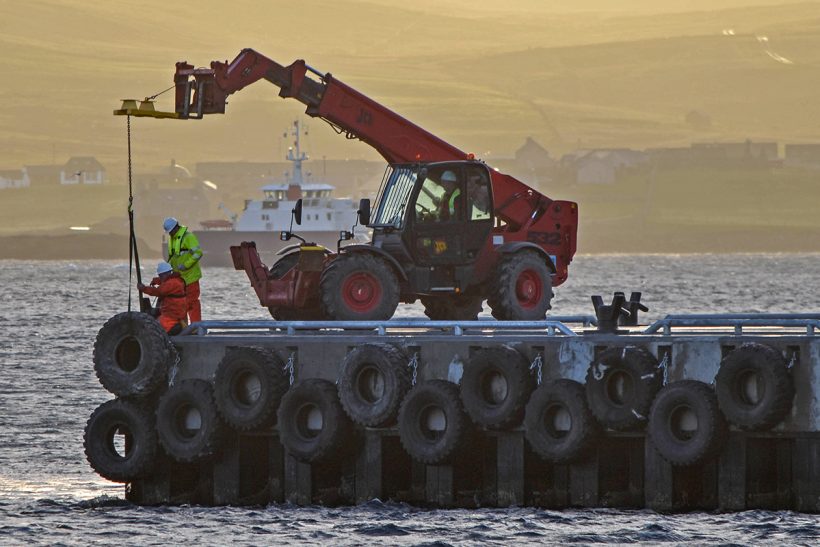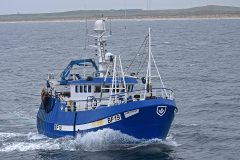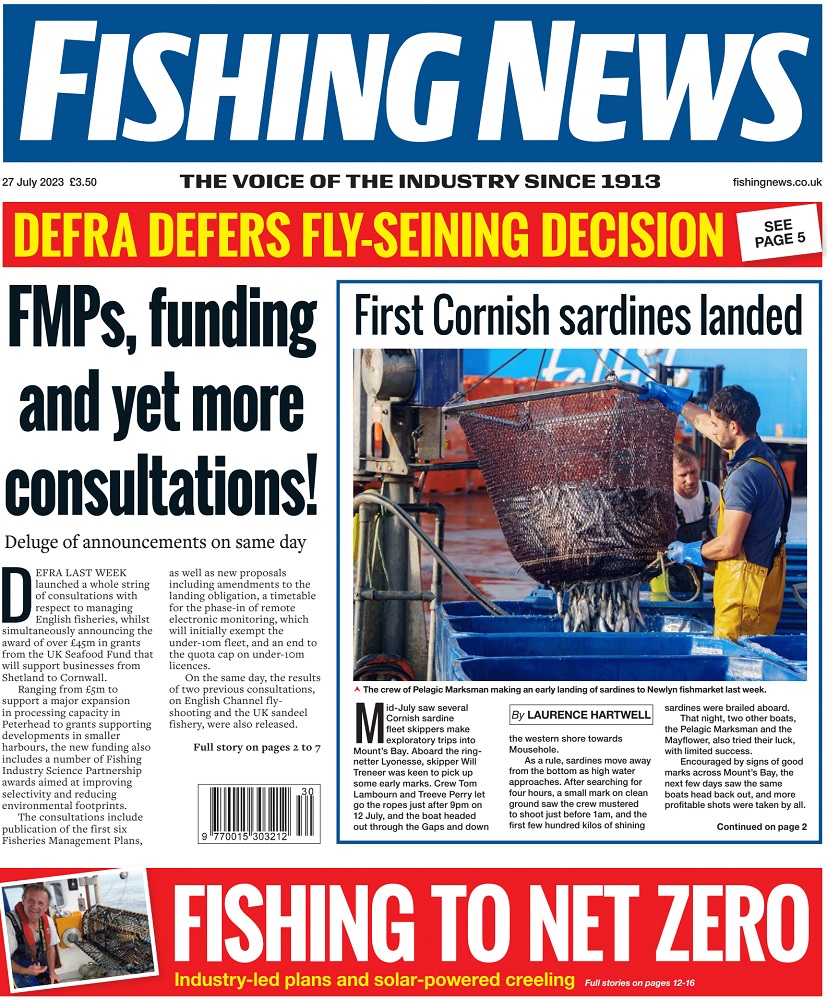It wasn’t quite a case of reinventing the wheel, but Lerwick Port Authority staff were definitely on the right road in sourcing fenders for a new pier – instead of importing an expensive system from the Far East, they devised an environmentally-friendly, cost-saving solution nearer to home, using recycled tyres.
Above: An innovative tyre fendering system developed by Lerwick Port Authority staff being fitted at the end of the new Holmsgarth North Deepwater Pier… (Photo: John Anderson)
In the latest turn, the project has now won an award in Shetland Amenity Trust’s biennial Environmental Awards.
Stuart Wadley, Port Authority HSEQ manager, said: “The tyres are an excellent example of our being innovative in caring for the environment, which we take very seriously in meeting and sustaining international standards across our operations. Our staff are to be congratulated on their initiative and on winning the award.”
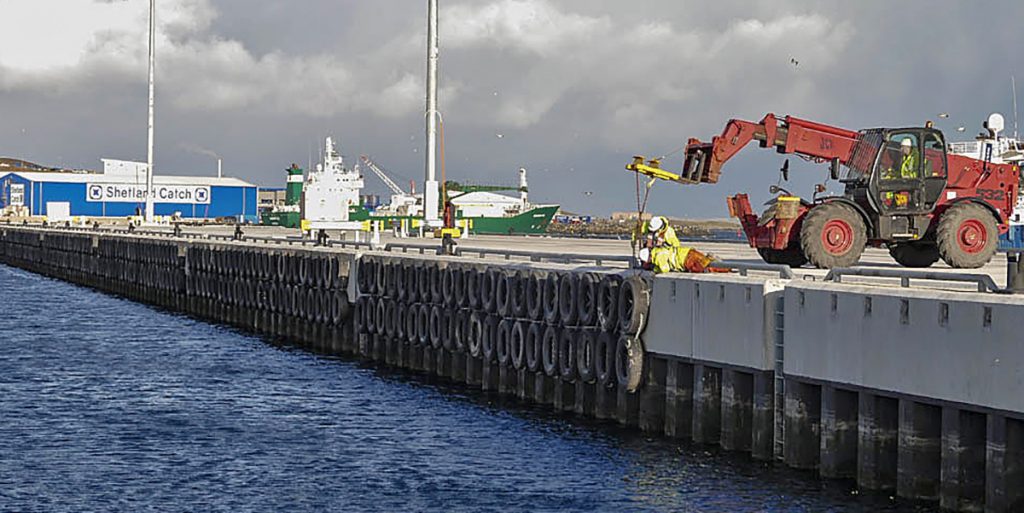
… and along the inner face. (Photo: Alexander Simpson)
The Shetland Environment Group, judges of the awards, said that the Port Authority fender project: “… shows the ingenuity of Shetlanders in re-using materials to create their own solutions, and how the re-use of materials can be very cost-effective. With the positive feedback from users, environmental credentials and cost-effective design, it may well inspire others to follow Shetland’s lead.”
Recent fendering systems elsewhere in the port have come from China, with long delivery times, are expensive to buy and install, and require frequent maintenance, with contractors required to work in tidal zones.
When the Holmsgarth North Deepwater Pier was designed, Port Authority staff proposed a bespoke, in-house solution, using two sizes of recycled tyres, and carried out aspects of the work, in conjunction with the designer and main contractor. This followed a successful tyre fender solution trialled at Mair’s Quay, in use by the fishing fleet since 2013.
On the inside of the 800m-plus Holmsgarth North Deepwater Pier, used by the fishing fleet, truck tyres were hung two-deep, while on the outside faces, used by bigger vessels, larger earth-moving machinery tyres were hung in an alternate ‘zig-zag’ pattern. Attached by brackets and chains, the rapid installation did not require tidal working. The innovation is in the design of the fixings and ability to switch out tyres more easily.
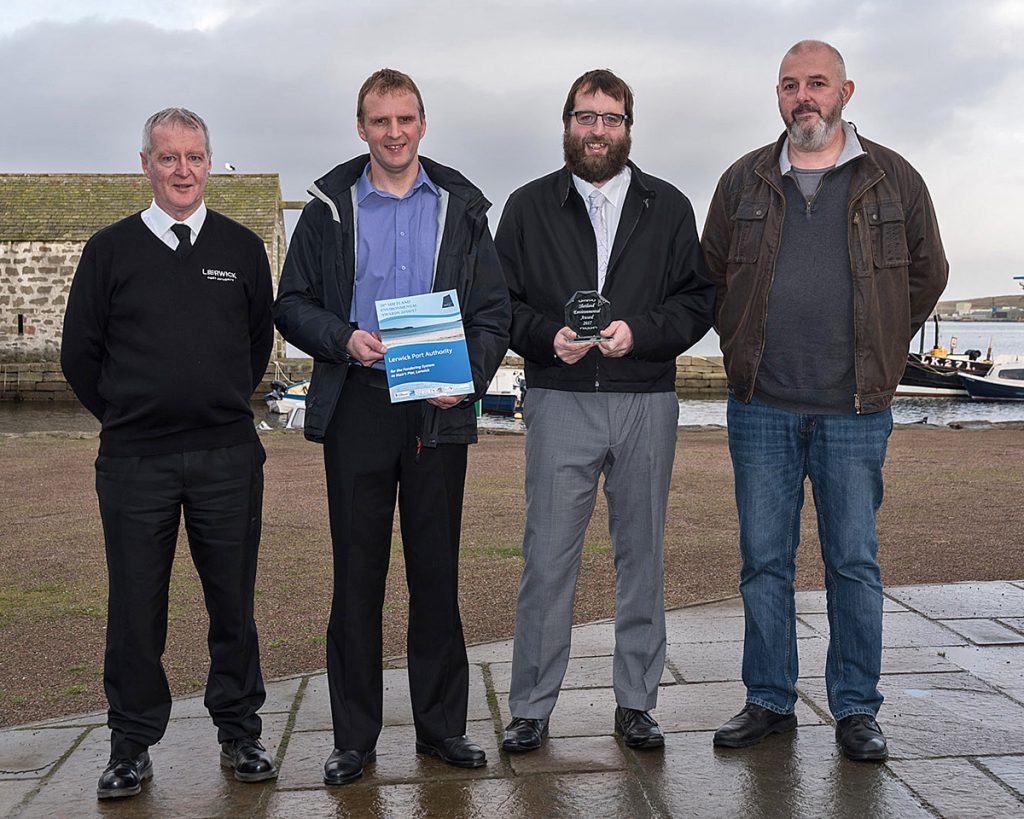
Lerwick Port Authority’s award-winning staff representatives, (left to right) superintendent John Anderson, with Ivan Moar, Stuart Gray and John Sinclair, shore operatives involved with the fabrication of the new fendering system.
Stuart Wadley added, “Like all the best ideas, this simple solution has a number of benefits, including significant environmental improvements from recycling and reduced delivery distance, savings in procurement, and cost-effective, practical maintenance, with the fendering being sacrificial, which also means minimised disruption to berth availability.”
With local sourcing of materials where possible, the supply of the larger tyres in Shetland and then Scotland was used up, with final deliveries coming from England. The project required 215-240kg of the larger tyres, and 580-600kg of the smaller size, with a total of more than 86t of tyres diverted from landfill.
There has been very positive feedback from vessel operators using the pier, including the local fishing fleet.
The Port Authority estimates that the bespoke fendering solution saved hundreds of thousands of pounds on the cost of developing Holmsgarth North Deepwater Pier, the completion of which was celebrated this summer. The ‘tyred-and-tested’ solution has now also been applied to the Port Authority’s recently-extended Dales Voe quay, with a number of even larger tyres re-used to protect the heavy-duty quay.
In 2010, a Shetland Amenity Trust Award recognised that ‘outstanding commitment to environmental improvement has placed Lerwick Port Authority at the forefront of environmental standards in Scotland’.
It followed Lerwick becoming the first Scottish port to successfully gain certification to the internationally-recognised environmental standard ISO 14001:2004 and implementing a programme of ongoing improvements. The Authority similarly became one of the first organisations in Scotland to successfully transition to the new 2015 version of the standard earlier this year.
Read more news from Fishing News here.



